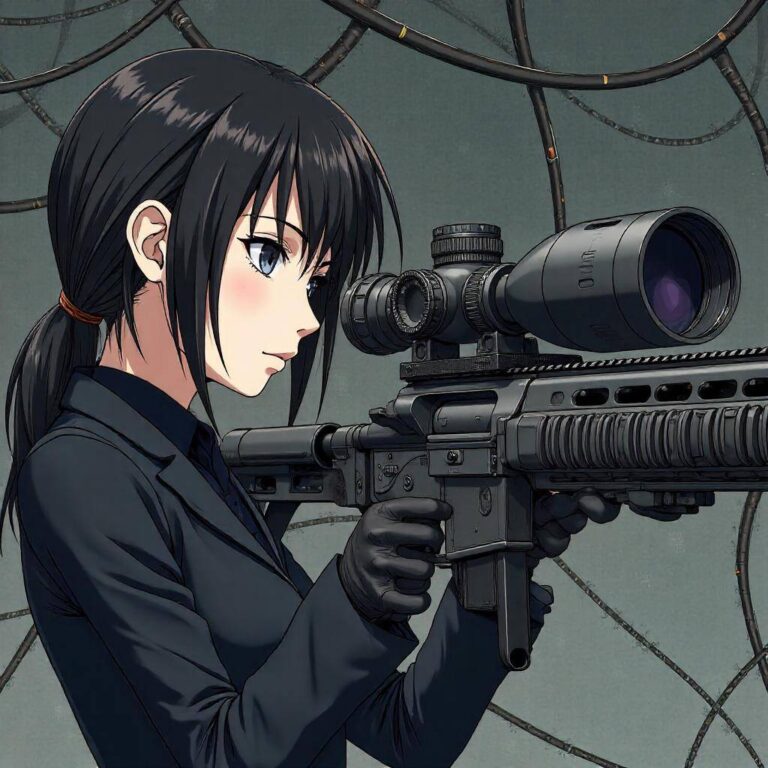Reader’s Question:
Does the beam rifle in Gundam have any purpose for its scope?
The Purpose of the Scope on Gundam’s Beam Rifle: A Deep Dive
When it comes to the iconic beam rifles in the Gundam universe, one question that often pops up is about the purpose of their scopes. As
a fan of both Gundam and, let’s just say, the intricacies of weapon design in anime, I’ve found myself pondering this question more than once. So, let’s break it down, shall we?
First Impressions of the Beam Rifle
The beam rifle is a staple in the Gundam series, known for delivering those impressive, flashy shots that often end in dramatic explosions. But when you really look at it, there’s so much more than just firepower at play here. The design is sleek, and it’s got that undeniable futuristic vibe that draws you in. I always found myself thinking about how cool it would be to wield one of these bad boys—until reality hit: I’m a college student majoring in psychology, not a mobile suit pilot! But back to the scope. At first glance, it resembles a traditional sniper scope, making you think it serves the classic purpose of zooming in on distant targets. However, it seems that the scope actually houses more complex technology than what meets the eye.
What’s Inside the Scope?
According to some insightful readers, the scope is more than a simple optical sight; it could include advanced cameras and optical measuring instruments. This means pilots can acquire targets without physically peering into the scope, which is pretty nifty. Imagine the flexibility of being able to target from the comfort of a cockpit! It also makes sense when you consider the mobility of the Mobile Suits (MS). They’re not just standing still; they’re moving, dodging, and fighting. Having a scope that doesn’t require the pilot to lean in adds to the overall agility of the MS in combat scenarios.
The Reality of Sniping in Space
However, there’s a flip side to this techy marvel. While the idea of having all this advanced targeting equipment is cool, it raises questions about practicality. Like my reader pointed out, for some MS, like the Z’Gok, it’s entirely possible to use the cameras on the Mobile Suit itself for targeting. So what’s the real deal with the beam rifle scopes? Are they just for show? Aesthetics can often outweigh function in anime design, right? I remember sitting in my university library one afternoon, trying to focus on a paper about human behavior but getting sidetracked by the latest Gundam episode. The intense battles and epic mechas always had me questioning what would realistically work in combat. And then I found myself thinking—what’s the difference between using the scope on the beam rifle versus the MS’s own cameras? Is the scope just another layer of complexity that, in the grand scheme of things, might not be all that necessary?
Is it Just for Looks?
I can’t help but wonder if part of the appeal lies in the aesthetic value. I mean, come on, there’s something undeniably cool about those sleek scopes glinting in the light of a distant star. They add to the overall design and give each Mobile Suit a unique flair. Perhaps the creators wanted to make the beam rifles not just functional but also visually striking. Plus, think about it: the way these rifles look contributes to the world-building in Gundam. Every detail, from the grip to the scope, helps portray a universe that’s technologically advanced yet still struggles with the moral complexities of war. There’s an entire narrative woven into each episode, and the beam rifle is just one of the many threads.
Final Thoughts: Function vs. Form
At the end of the day, the beam rifle and its scope may be more about style and the fantastical elements of the Gundam universe than practical warfare. As a psychology major, I can’t help but appreciate the depth of thought that goes into designing these elements. They reflect a blend of culture, technology, and narrative that resonates with audiences around the globe. So, whether you’re a die-hard Gundam fan or a casual viewer, the beam rifle—scope and all—reminds us that in the world of anime, the fusion of form and function can often transcend reality. Just like life, right? Sometimes it’s not about what works best but what tells the best story. As I continue my journey through both academia and the expansive world of anime, I’ll be keeping an eye on the quirks and wonders that creators build into their narratives. Here’s to more questions, more discoveries, and a bit of fun along the way!



